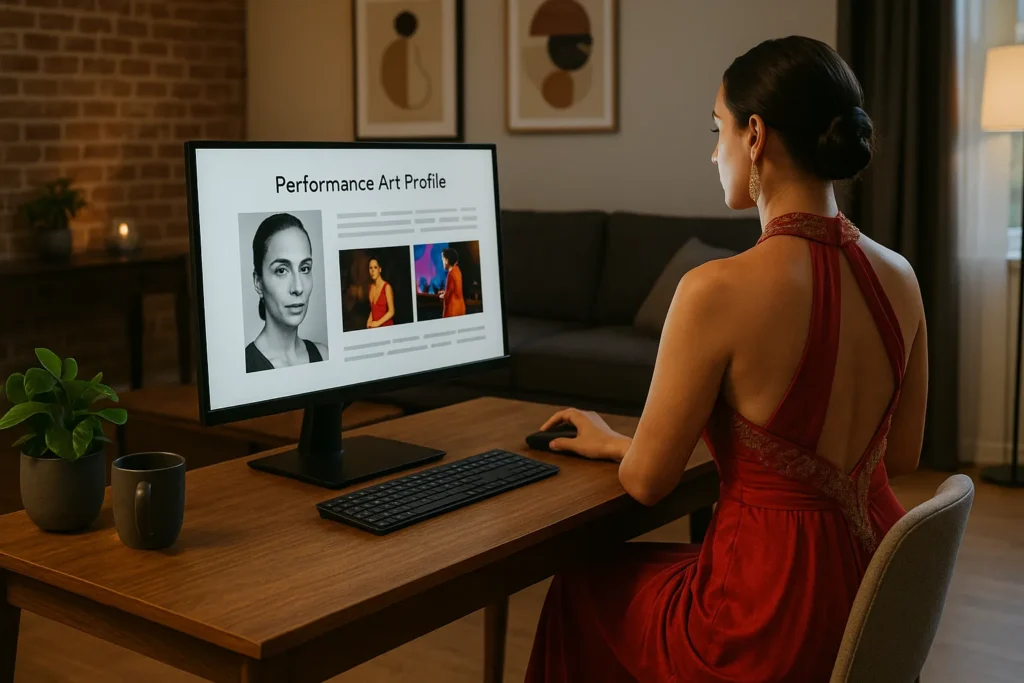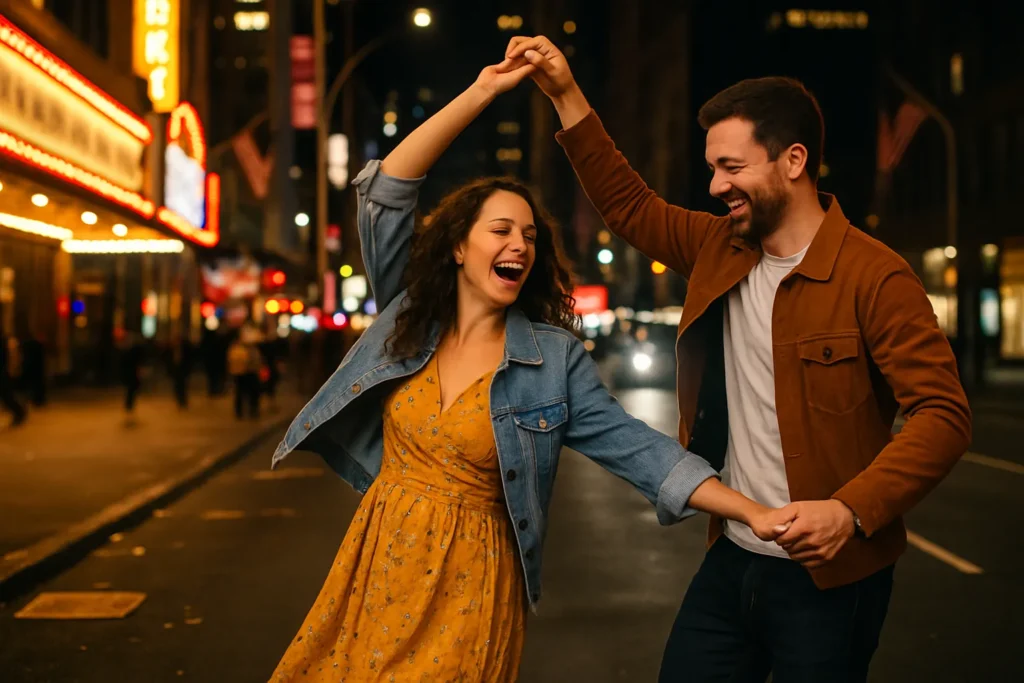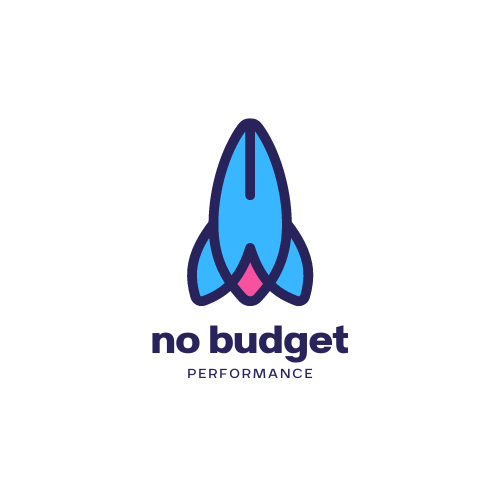How to Build a Personal Brand Website as a Creative Artist
If the idea of building a website for artists feels too technical or time-consuming, you’re not alone. Many performers wonder if something rooted in movement, energy, and presence, like performance art, can live online without losing its spark.
But it can. And it should.
In this guide, you’ll find practical steps for building a site that reflects your work, your voice, and your audience. From choosing what to show to writing about your work in a way that feels natural, we’ll walk through it all.
Your next performance begins here. Let’s build your home online.
Why a Website is Your Best Performance Partner
A website becomes your best partner when it saves time and answers questions before they’re asked. Say you’re applying for a festival. Instead of chasing down clips or rewriting your bio for the fifth time, you send a single link. Everything they need is already there.
If you have a performance-art profile, people can experience your work any time they wish. The structure, tone, and content all point to what you care about, not just what you’ve done.
Here’s what a site like this can do:
- Keep your past performances, images, and texts in one place
- Show how your work has changed over time
- Let curators and collaborators explore without needing to request files
- Provide a steady link for applications, press, or festivals
The most important part we often forget is that it also saves time. You can post event updates, add project notes, or point people to specific work without repeating yourself. The more organised it is, the easier it becomes to keep others informed.
And when someone lands on your site, they’ll have more than a highlight reel. They’ll see your thinking, your direction, and the way you approach performance.
Now let’s figure out how to set the tone for what they see next.

Define Your Voice in the Art World
If your site doesn’t reflect your tone, people will draw their own conclusions about you without your input. That can lead to misunderstandings about your focus, your values, or the kind of work you do.
A friend of mine had a series of powerful performances, but her website looked like a template for tech startups. The visuals were cold, the language was overly formal, and none of it lined up with her work. When curators reviewed her site, they couldn’t quite connect the person to the practice. It cost her opportunities.
So, how you present yourself changes how others interpret your work. That includes the language you choose, the pace of your layout, and the kinds of media you share.
One place to start is your bio. A short line or two with uniqueness and a bold statement can work wonders. One artist I know writes, “I work with repetitive action and ambient sound to process loss and tension.” That single line gives a clear sense of where her work lives.
To help your site reflect your tone, try:
- Choosing colours and type that match the energy of your performances
- Labeling pages with language that fits your work, not just standard terms
- Showing a few behind-the-scenes sketches or tests beside polished clips
If you work in conceptual or feminist art, your structure might follow a different logic. Prompts instead of menus. A non-linear path through the site. These choices can create a stronger impression than any statement could.
Let’s shape the structure that holds all of that together.
The Core Pages Every Artist’s Website Needs
Now it’s time to start building your web pages. Don’t worry, it’s easy. You only need 5 pages: About You, Portfolio, What’s On, Contact, and a Homepage.
Let’s go into a bit more detail about each of the pages of your site, so you know exactly what to create.
About You
Your About You page should be your life’s story. Start by writing a few lines about your current focus and creative path. For example, instead of listing training or awards, say something like: “My work explores repetitive action as a response to environmental anxiety.” Include a photo if it fits your style. This section often builds the most trust with curators and collaborators.
Portfolio
Think of this page as a digital gallery. Choose five to six pieces that reflect your creative direction and style. A performance artist might include looped clips with captions, while visual artists often use a clean, scrollable layout. For each piece, add a short note with the title, date, and intent. If you work across different forms, organise the page by theme or medium to make it easier to follow.

What’s On
Use this space to list current and upcoming events, residencies, or collaborations. It shows activity and momentum. Even if nothing formal is scheduled, share what you’re working on or planning next. Some artists include rehearsal photos, grant application blurbs, or concept sketches. A simple calendar or list format keeps this easy to update.
Contact
Let people know how and why to get in touch. Use a short form or link to your email. Add a note like “Open to creative collaborations and commissions” or “Available for workshops and guest talks.” Including social links or even a downloadable press kit helps galleries or producers take the next step.
Homepage
This is the most important page on the whole site. You can use one high-impact image or a looping clip here to hold the attention quickly. Write a short statement that captures your style or intention, such as “Exploring movement, ritual, and voice through site-based performance.” Make sure navigation is clear. A strong homepage gives your work room to unfold naturally.
Now that the structure is in place, let’s focus on how to present your work without losing its energy online.
How to Present Performance Art on Your Website
Start by thinking about the structure of your artwork. Is it built around gestures? Sound? Duration? Let that guide the way you present it. A single looping video can capture the emotional weight of a longer piece. Paired with a few lines of context, it can shift from documentation to artistic expression.
One artist I worked with created a page that used layered video, ambient sound, and fragments of text to recreate the sensory experience of a site-specific ritual. It didn’t try to mimic the original, but it respected the work’s shape and feeling.
If your work explores body art or themes tied to the human form, close-up images or rehearsal stills can evoke what it felt like to witness it live. Think of your website as another performance space, one where you control the pacing, layout, and mood.
Let your audience in. You don’t need to explain everything. But if someone can feel a fraction of what you felt while performing, the site is doing its job.
Now that the work is visible, let’s talk about giving your experimental ideas room to breathe.
Own Your Avant-Garde
Sometimes the most revealing parts of your work aren’t the final pieces. They’re the early versions, rough tests, or moments that never made it to the stage. If your practice leans toward experimentation, your site should leave room for that kind of material.
One page could be titled “Field Notes,” filled with studio clips, concept fragments, or rehearsal audio. Instead of polishing everything, let the unfinished work speak for itself.
Here are a few creative ways to do that:
- Create a private archive using password protection for works-in-progress
- Upload “scraps” or abandoned projects that still hold value
- Share a visual timeline of a performance’s development from idea to stage
- Include audience reactions or experimental process footage
Artists working in feminist art or conceptual art often use their sites to showcase evolution, not just outcomes. That approach builds trust and shows depth. Your creative expression doesn’t need explanation, just honest framing.
Celebrate Your New York Minutes
What’s a New York minute? It’s one of those moments that flash by quickly, yet stay with you. In the context of art, it could be a packed room, a brief mention in a review, or a performance that changed how you see your work.
Your website is where those moments can live on. Use this section to celebrate the events, people, and turning points that have shaped your artistic life.
- Exhibitions and festivals: Have a list showing performances with the title, year, and location. Include a short sentence about what you presented or learned. If you showed new work in New York or explored movement at a fringe festival, share a clip or image. It gives visitors a sense of scale and growth.
- Press and articles: Link to interviews, artist features, or reviews. Don’t hesitate if it’s not exotic, because even small mentions count. If an art blog praised your use of silence or movement, pull a quote and share it. This gives your artwork more weight and signals credibility to curators and collaborators.
- Collaborations and collectives: Mention any work you’ve done with other artists or groups. Include a photo and a line about what you contributed. Whether it was painting for an installation or co-creating a sound-based performance, these connections show range and community.
- Downloads and reference links: Provide a CV, press kit, or recent project folder. Keep it tidy but accessible. Galleries, producers, and interviewers often check here first when they’re preparing to reach out.
Even a short list tells a longer story. From a pop-up in Adelaide to a premiere in New York, each moment adds to the shape of your career.

Now It’s Your Turn to Build A Personal Brand Website
You don’t need a gallery opening or a perfect showreel to get started. You already have something powerful: your voice, your movement, your ideas. Now’s the time to create a space that carries it forward.
A performance-art profile helps you stay visible, even between shows. It gives your artwork a home, one that speaks in your tone and welcomes the right people in.
The tools are simpler than they seem. You can create a website for artists in stages, adding pieces as you go. One project, one photo, one idea at a time. And over time, it grows into something that supports your work and reflects it honestly.
Want to see how other independent artists are building their spaces? Explore No Budget Performance for ideas, resources, and community.
You’ve already made the art. The site is just the next layer of it.
